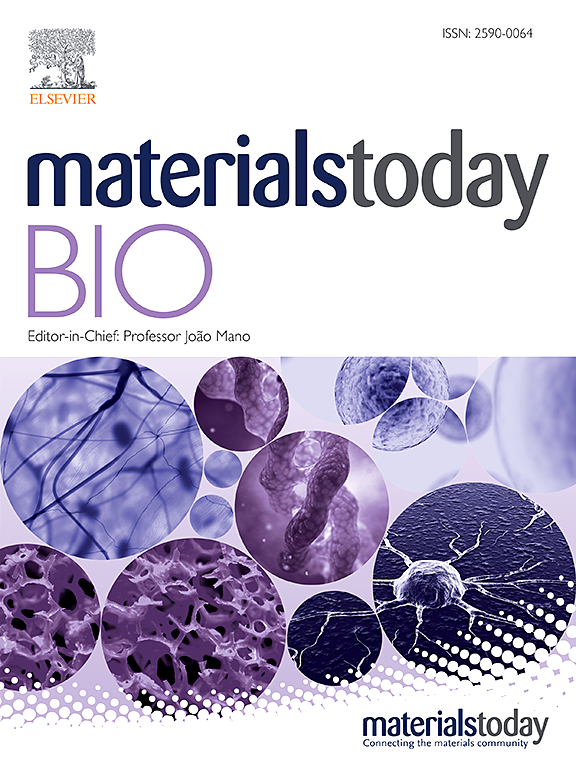A tumor-targeting black phosphorus-based nanoplatform for controlled chemo-photothermal therapy of breast cancer
IF 8.7
1区 医学
Q1 ENGINEERING, BIOMEDICAL
引用次数: 0
Abstract
Combination therapy with high efficacy and precision shows great potential in breast cancer treatment. Herein, we developed a multifunctional nanocarrier (NBP@mSiO2-PEG-cRGD) for tumor-targeting chemo-photothermal therapy of breast cancer in a controlled manner. The nanocarrier was constructed by enveloping nano-sized black phosphorus (NBP) within a mesoporous silica shell (mSiO2) modified with the tumor-targeting peptide c(Arg-Gly-Asp-dPhe-Cys) (cRGD). Due to the existence of pore channels within mSiO2, NBP@mSiO2-PEG-cRGD achieved high loading efficiency of indole-3-carbinol (I3C) molecules (NBP@mSiO2-PEG-cRGD/I3C), an anti-tumor agent derived from food. Mediated by cRGD/integrin αvβ3 interaction, NBP@mSiO2-PEG-cRGD/I3C reached breast tumors in a targeted manner. Once irradiated by the near-infrared laser, our nanocarrier exhibited superior photothermal conversion, which not only induced photothermal therapy but also facilitated the release of I3C from NBP@mSiO2-PEG-cRGD/I3C within tumor cells to inhibit the activation of proto-oncogenic phosphoinositide 3-kinase (PI3K)-AKT signaling pathway and drive chemotherapy. All these attributes contributed to a satisfactory therapeutic effect toward breast tumors, manifesting in significant inhibition of cell proliferation, promotion of cell apoptosis, and reduction of tumor micro-vessel formation, which led to the efficient inhibition of tumor growth. Collectively, the nanocarrier developed here provided useful insights into the development of multifunctional platforms to effectively combat cancer.

求助全文
约1分钟内获得全文
求助全文
来源期刊

Materials Today Bio
Multiple-
CiteScore
8.30
自引率
4.90%
发文量
303
审稿时长
30 days
期刊介绍:
Materials Today Bio is a multidisciplinary journal that specializes in the intersection between biology and materials science, chemistry, physics, engineering, and medicine. It covers various aspects such as the design and assembly of new structures, their interaction with biological systems, functionalization, bioimaging, therapies, and diagnostics in healthcare. The journal aims to showcase the most significant advancements and discoveries in this field. As part of the Materials Today family, Materials Today Bio provides rigorous peer review, quick decision-making, and high visibility for authors. It is indexed in Scopus, PubMed Central, Emerging Sources, Citation Index (ESCI), and Directory of Open Access Journals (DOAJ).
 求助内容:
求助内容: 应助结果提醒方式:
应助结果提醒方式:


